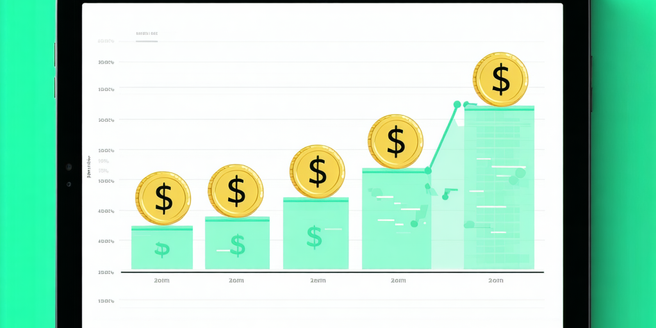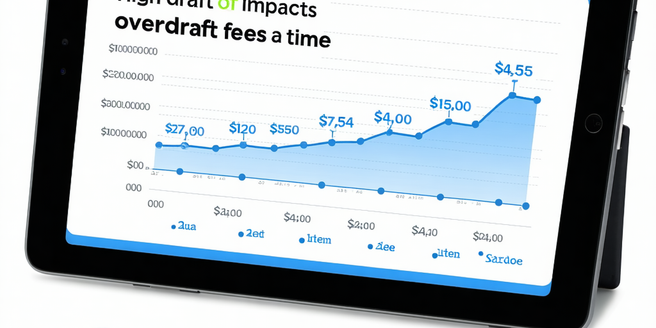
What is an Overdraft and How Does it Work?
| Feature | Description | Impact |
| Overdraft Limit | The maximum amount you can withdraw beyond your account balance. | Provides flexibility but careful monitoring is needed. |
| Interest Rate | Interest charged on the overdraft balance. | Higher rates can lead to increased costs. |
| Fees | Additional charges for using your overdraft. | Varies by financial institution, impacting overall cost. |
| Repayment Terms | Timeframe for paying back the overdraft. | Important for cash flow management. |
| Eligibility | Criteria to qualify for an overdraft facility. | Bad credit may affect eligibility. |
| Application Process | Steps to apply for an overdraft. | Varies by institution but affects application success. |
The Impact of Bad Credit on Overdraft Eligibility
When it comes to securing an overdraft, having a bad credit score can significantly affect your eligibility. Financial institutions typically assess creditworthiness to determine if they should extend an overdraft facility to a customer. A poor credit score often implies a higher risk of repayment default, prompting banks to either offer limited overdraft facilities or decline applications altogether. In addition to outright refusal, some banks might offer overdrafts but with higher fees or interest rates, making it expensive to maintain. Therefore, individuals with bad credit must strive to improve their scores to increase their chances of securing favorable overdraft terms. Options such as ensuring regular bill payments and reducing existing debt may help mitigate risks perceived by banks when evaluating overdraft applications.
Pros and Cons of Using Overdrafts with Bad Credit
Using overdrafts can have advantages and drawbacks, especially for those with bad credit. One significant advantage is the immediate access to funds when you encounter unexpected expenses or cash flow issues without the need for a more rigid loan approval process. Overdrafts also typically allow you to bridge the gap between paydays, offering short-term financial relief. However, the cons can outweigh these benefits if not managed carefully. Banks may impose higher fees and interest rates for those with bad credit, increasing the cost of borrowing. Additionally, habitual reliance on overdrafts can lead to a vicious cycle of debt, undermining financial stability over time if repayments are not timely. It’s essential to critically evaluate the costs and rigorously manage repayments to prevent long-term financial repercussions.
How to Apply for an Overdraft with a Bad Credit Score
Applying for an overdraft with a bad credit score can be challenging but not impossible. The first step is to approach banks or financial institutions where you already hold accounts, as they may be more willing to consider your application based on your existing relationship. It’s important to prepare thoroughly by gathering financial documents that demonstrate your income and capabilities to repay. An honest discussion about your current financial situation and how you intend to manage the overdraft can help bolster your application. Some banks may offer secured overdraft facilities where collateral is required, which can be an alternative if unsecured options are unavailable due to credit concerns. Additionally, consider working with financial advisors or credit counselors who can provide guidance tailored to improving approval chances.
Overdraft Fees: What to Expect with Bad Credit Accounts
For individuals with bad credit accounts, overdraft fees can be considerably higher. Banks are likely to impose greater costs due to the perceived risk associated with lending to individuals with lower credit ratings. These fees may include higher interest rates on the borrowed amounts and more substantial penalty charges for late payments. Besides the regular interest on the outstanding balance, customers could incur maintenance fees just for having an overdraft facility. It’s crucial to read the terms associated with overdraft services carefully to understand all potential charges. Mismanaging an overdraft facility can quickly lead to a spiraling debt situation, reducing its usefulness as a financial tool. Staying aware of all pertinent fees ensures you can make informed decisions about its use and avoid additional financial strains.
Strategies to Manage Overdrafts and Avoid Further Debt
Managing an overdraft carefully is essential to prevent further debt, especially if you already have a bad credit score. One of the first strategies is to keep a detailed budget, tracking your expenses meticulously to avoid unplanned overdraft use. Setting up alerts with your bank can also prevent unauthorized spending by notifying you when your balance is low. Regularly reviewing and understanding your bank statements will help spot potential oversights and unauthorized transactions. Another important strategy is to explore negotiation options with your bank; they may agree to lower fees or adjust your repayment schedule if you face difficulties. Finally, applying strict discipline in aligning spending with actual income rather than relying on overdraft for routine expenses helps manage financial health sustainably.
Alternatives to Overdrafts for Bad Credit Accounts
For those concerned with the implications of overdraft usage with bad credit accounts, exploring alternatives is essential. Personal loans may be a viable option, offering fixed interest rates and predictable repayment schedules, which can be beneficial for budget planning. Credit unions are another avenue; they often provide more lenient lending to members with bad credit. Additionally, lines of credit might present a flexible borrowing option with potentially lower fees than traditional overdrafts. Peer-to-peer lending platforms could also be considered, connecting borrowers directly with lenders willing to extend credit based on factors beyond credit scores. It’s crucial to weigh these alternatives by evaluating the terms, fees, and flexibility against your financial needs and repayment ability to ensure long-term financial stability.
Tips for Improving Bad Credit to Enhance Overdraft Options
Improving a bad credit score can amplify your overdraft options and terms. Begin by obtaining credit reports from major bureaus to identify any discrepancies or errors and have them rectified promptly. Maintaining a history of timely bill payments is perhaps the most significant determinant of credit improvement, positively influencing your credit report. Consider reducing credit card balances to below 30% of the credit limit to positively impact your debt-to-credit ratio. Limiting new credit inquiries prevents unnecessary hits to your credit score, further maintaining stability. Additionally, some financial institutions offer credit-builder loans geared toward improving credit scores, gradually increasing trust as banks see positive credit activity. Employing these strategies can widen the scope of financial services available to you.
Legal and Regulatory Considerations for Overdrafts
Understanding the legal and regulatory framework governing overdrafts is vital, particularly when dealing with bad credit accounts. Financial institutions are bound by specific regulations to ensure transparency concerning fees, terms, and conditions associated with overdraft facilities. The Consumer Financial Protection Bureau (CFPB) in the United States, for example, mandates that banks explain overdraft options and charges, thus protecting consumers from opaque practices. This means you can choose opt-in or opt-out for overdraft services on debit transactions. Additionally, it’s important to be aware of your rights in case you wish to dispute fees or mishandling of accounts. Being vigilant about the regulations applicable in your region ensures not only that you are informed but also that you can make sound financial decisions while leveraging overdrafts where necessary.
Future Trends in Banking for Bad Credit Overdrafts
The landscape of banking, especially concerning overdrafts for those with bad credit, is evolving with technological and regulatory advancements. One trend is the increased use of artificial intelligence and machine learning algorithms in assessing creditworthiness, potentially offering more nuanced evaluations beyond traditional credit scores. This evolution could lead to personalized overdraft offerings that consider broader financial behaviors rather than just credit scores. Moreover, the rise of digital-only banks and fintech innovations provide alternative platforms for securing overdrafts at competitive rates. These institutions may offer more tailored products designed specifically for users with less favorable credit profiles. Furthermore, open banking systems could facilitate greater transparency and communication between lenders and borrowers, enhancing the ability for individuals to manage their finances inclusively.

